
Chinese Char Siu BBQ Pork is one of my favorite dishes. Most of my cooking starts with natural ingredients, rather than using store-bought. Pesto for instance, is so much better if you make it yourself than store-bought, also because most of the store-bought versions do not contain the proper ingredients. One of the exceptions is char siu Chinese bbq sauce, because I could not make it completely from scratch anyway (as some of the ingredients are not available here or would require doing my own fermenting — I have not gone there (yet)). And the store-bought version is pretty good. But when I saw a recipe to make char siu (almost) from scratch on Chinese Cooking Demystified, I knew I had to try it.
Most of the work may be in sourcing the ingredients, and I could not find all of them. Luckily the recipe specifies which ingredients are essential and which are optional. The ingredients I did not use were maltose (substituted with honey), red yeast rice (for color only, not for flavor), rock sugar (substituted with honey), dried and aged tangerine peel, licorice root, and dried luohanguo fruit. Chris’ recipe calls for 12 whole cloves as a suggested ingredient. I thought the cloves came out too strongly in the final result, so in the recipe below I have adjusted to use only half the amount.
Ingredients
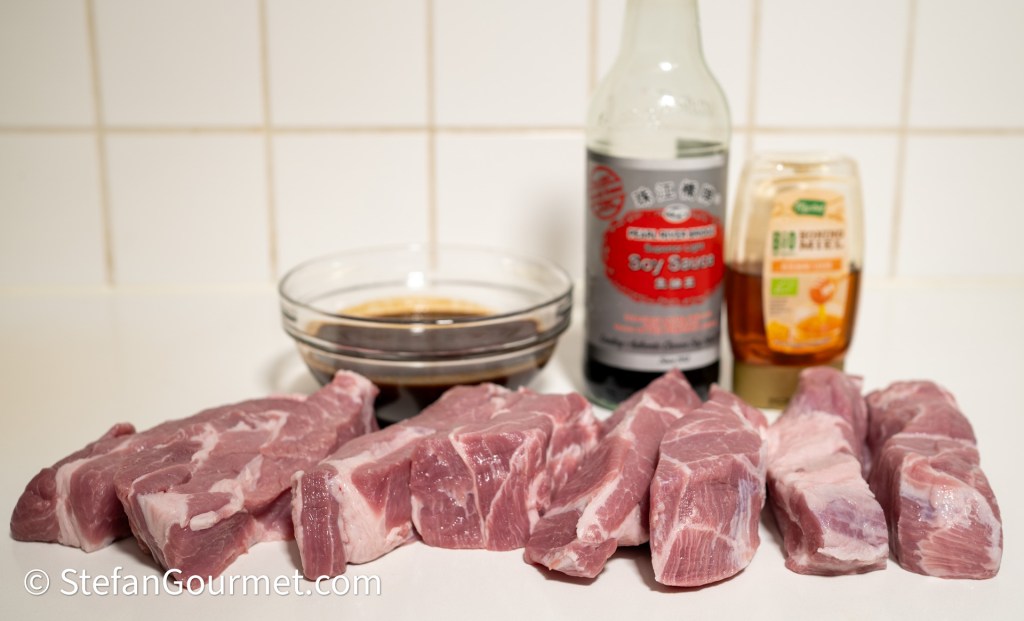
- pork neck or shoulder (known as pork butt in the US), cut into thick strips
- light soy sauce, to taste
- honey, to taste
- char siu marinade, from below
- cornstarch
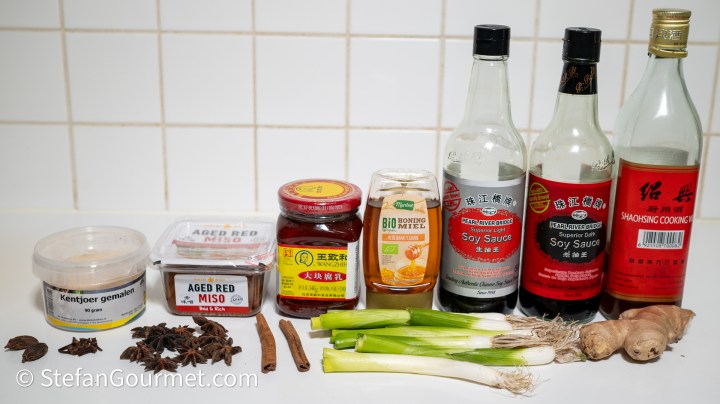
- 3 Tbsp red miso
- 6 Tbsp honey
- 1 Tbsp liquor from red fermented tofu
- 60 grams (1/2 cup) chopped scallions, white and light green party only
- 25 grams (1/4 cup) minced ginger
- 3 Tbsp light soy sauce
- 2 tsp dark soy sauce
- 60 ml (1/4 cup) shaoshing rice wine
- 8 to 10 star anise
- 2 sticks cinnamon
- 1/2 tsp Shajiang powder (Sand Ginger, Kencur, Cutcherry)
- 6 whole cloves
- 2 pods black cardamom
- 1 Tbsp cooking oil
- 600 ml (2 1/2 cups) water/
Instructions

Fry the scallion and ginger in the smallest possible amount of oil (about 1 tablespoon) for about 1 minute.
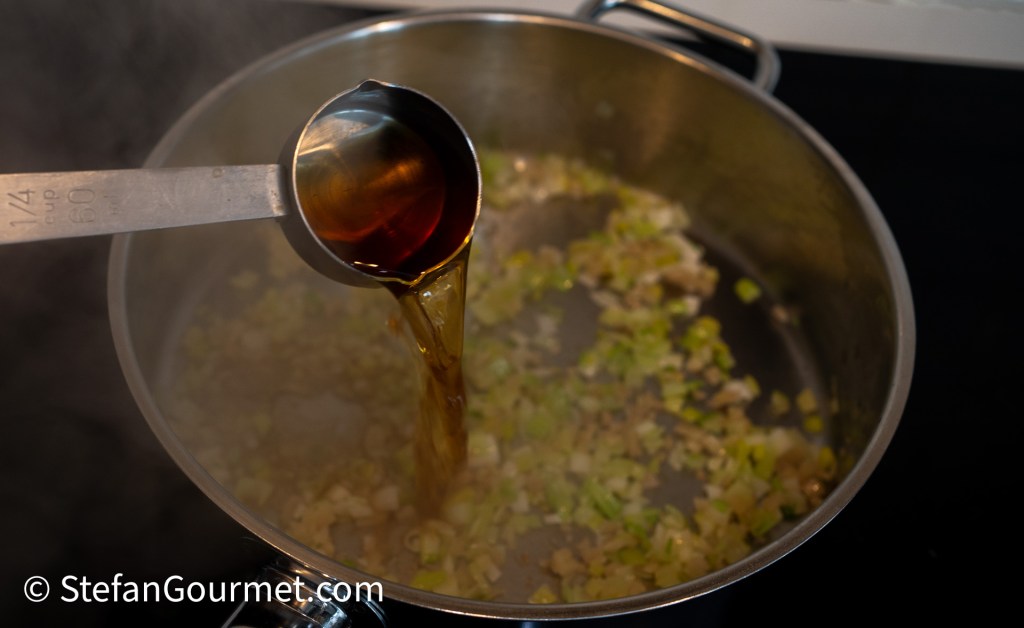
Add 60 ml shaoshing rice wine…
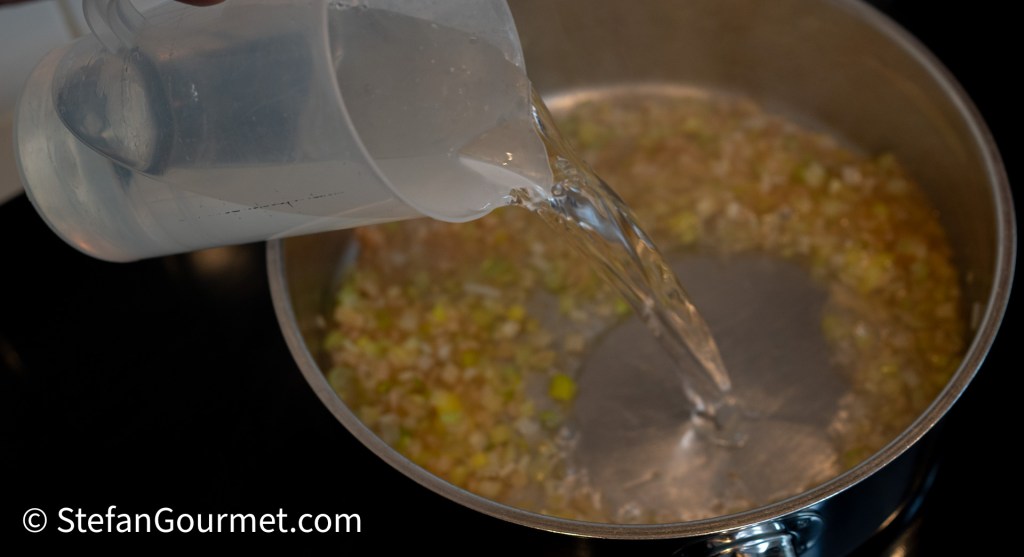
…and 600 ml (2 1/2 cups) of water…
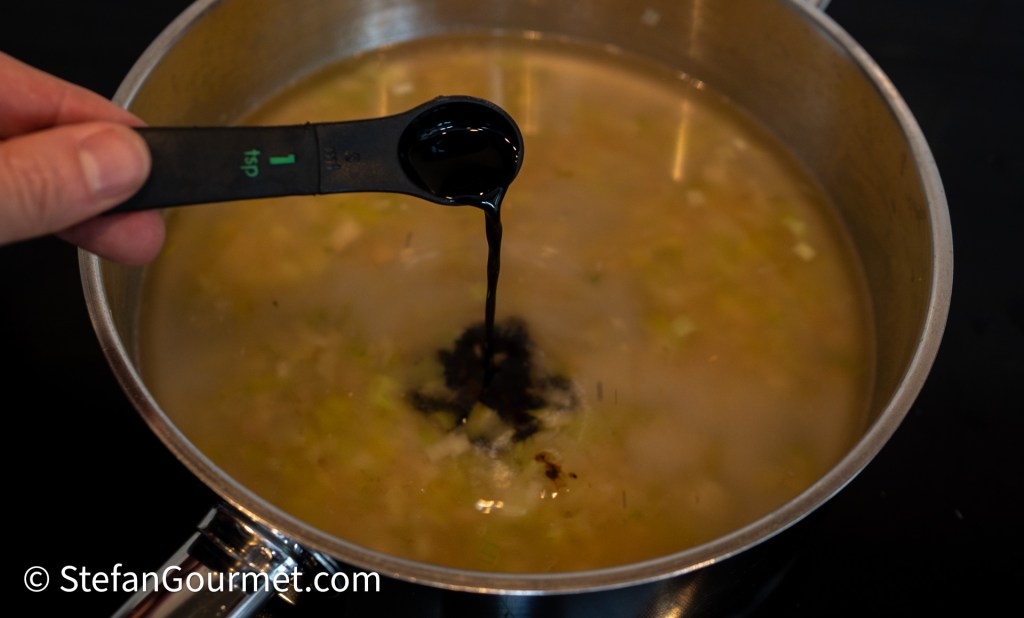
…2 teaspoons of dark soy sauce…
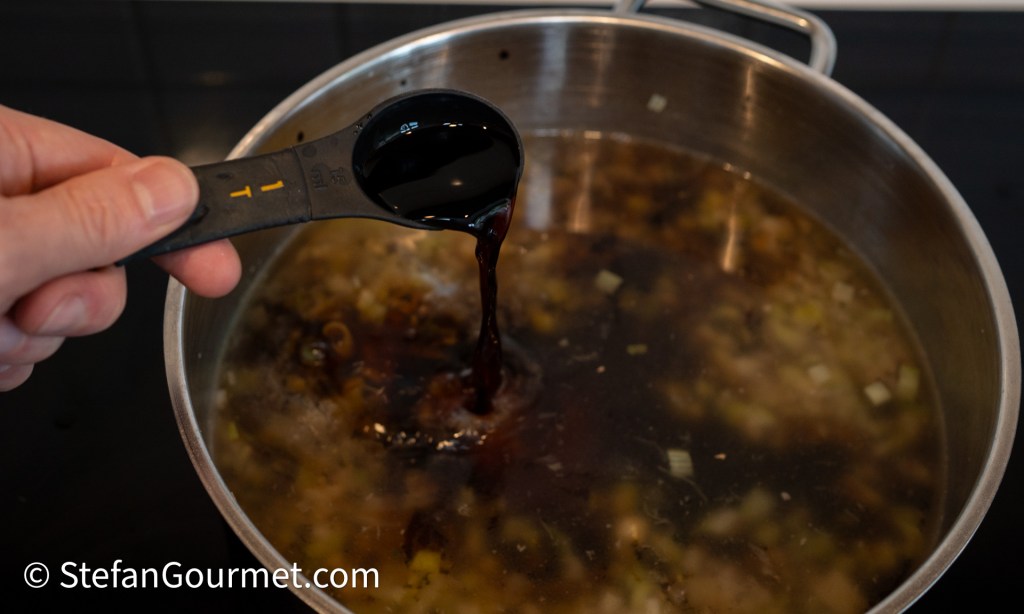
…3 tablespoons of light soy sauce…

…2 cinnamon sticks, 6 whole cloves, 8 to 10 star anise, and 2 black cardamom.
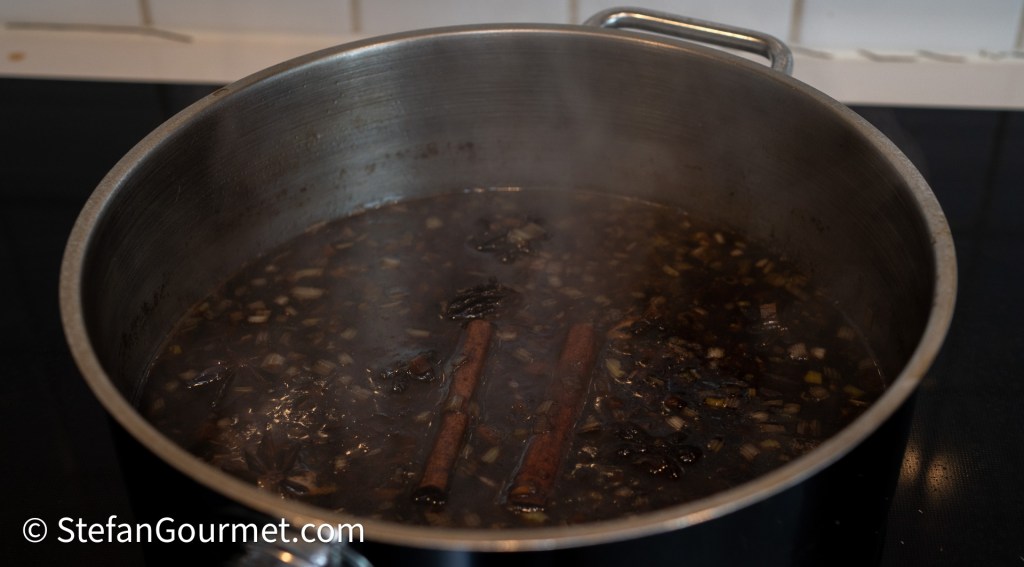
Bring to a boil and simmer very slowly until it has been reduced to about 250 ml (1 cup), 30 to 90 minutes. The main purpose here is to extract flavor and not to reduce it as quickly as possible, so it is important to simmer slowly.
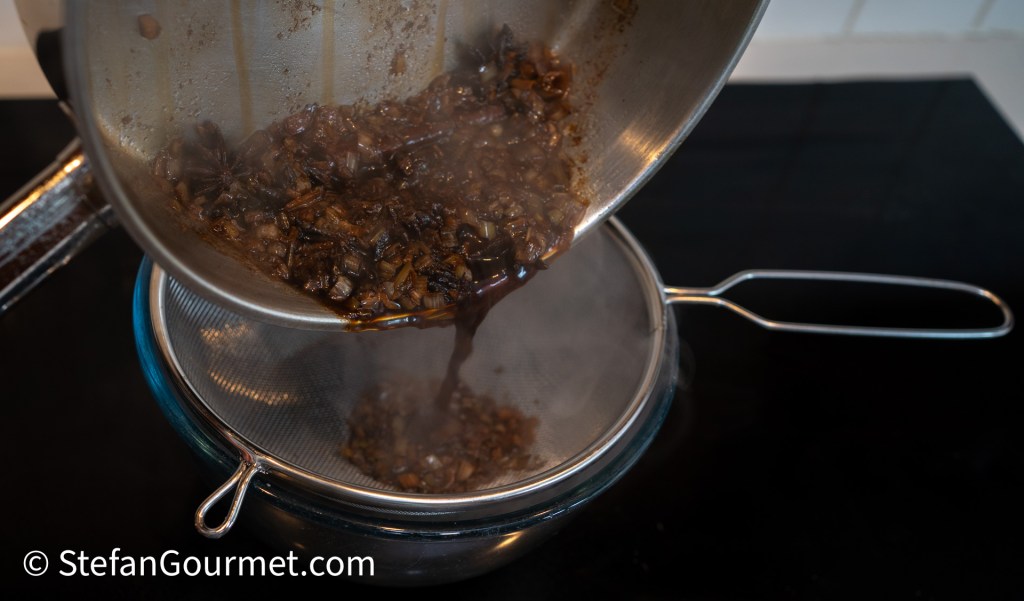
Strain the liquid through a sieve and discard the solids.
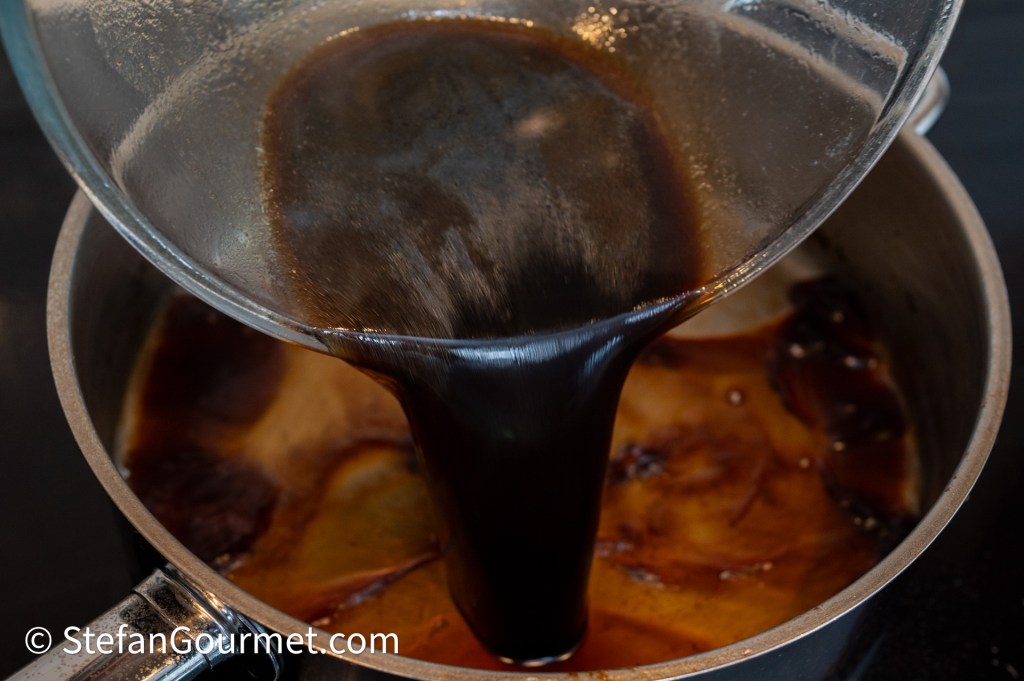
Pour the strained liquid back into the pan. You should now have about 180 ml (3/4 cup).
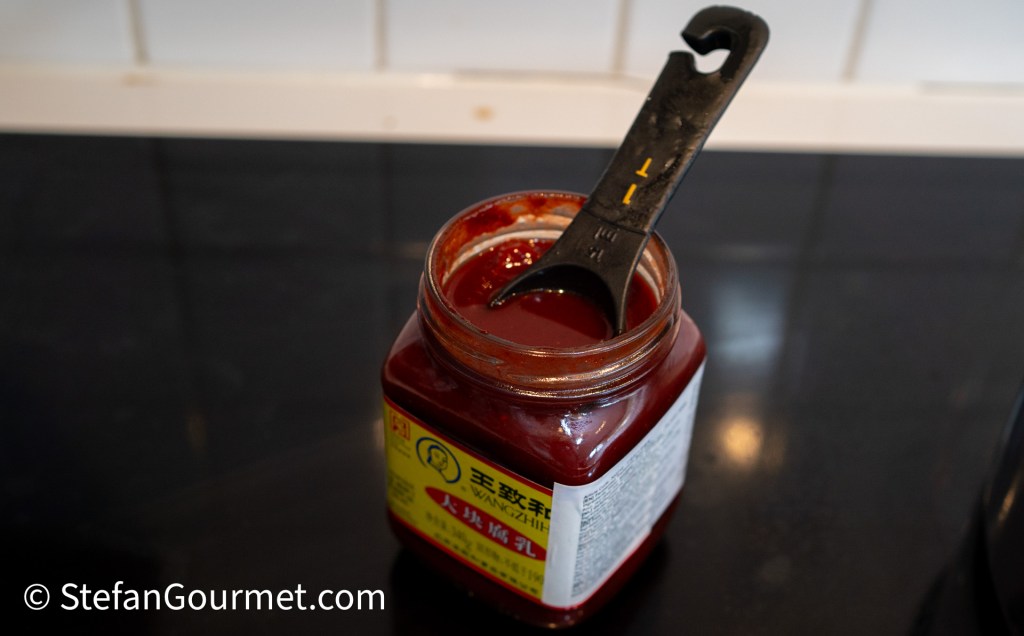
Add a tablespoon of the liquor from red fermented tofu…
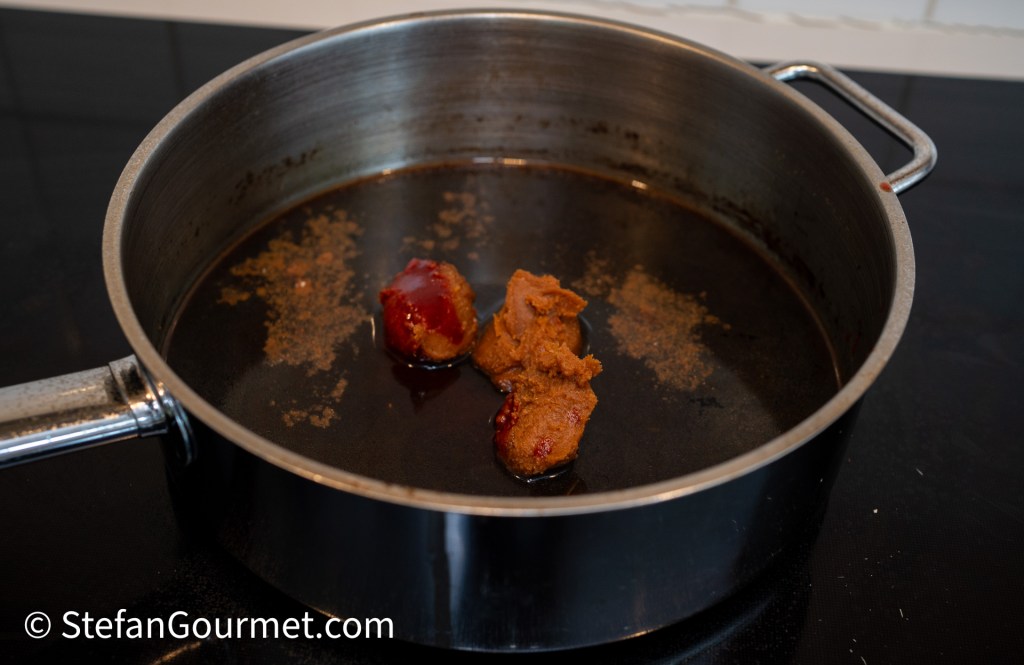
…and 3 tablespoons of miso, as well as 1/2 teaspoon of kenchur powder.

Stir over low heat until the miso has dissolved.
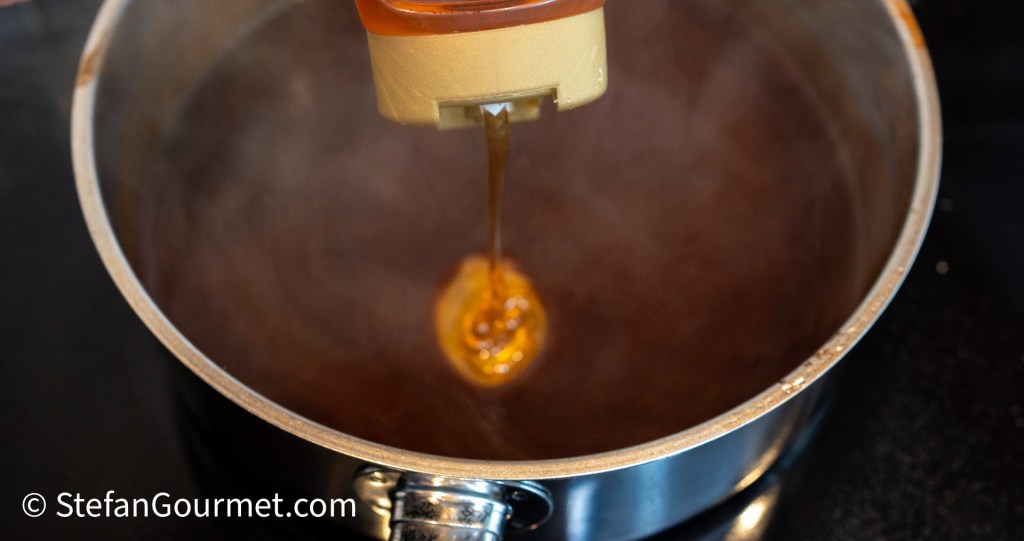
Add 6 tablespoons of honey and stir until it has dissolved. Allow the marinade to cool.
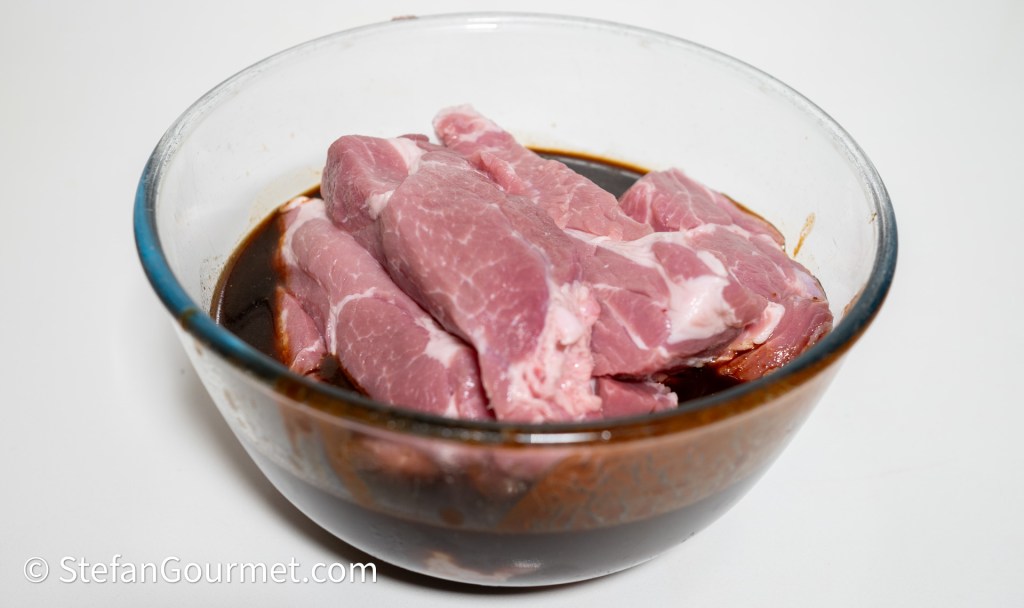
Combine the pork with the marinade in a large bowl…
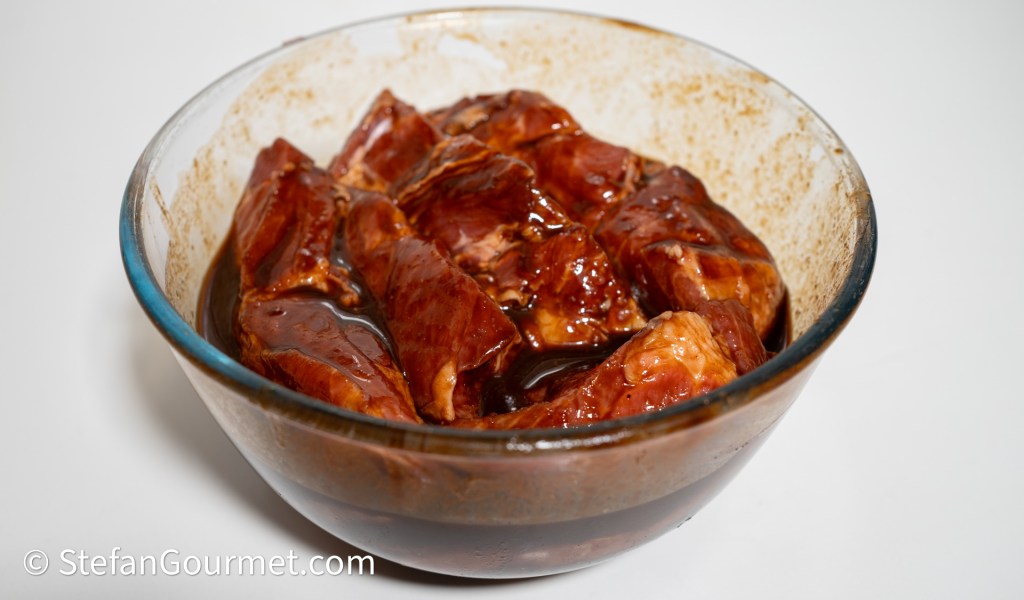
…and stir until the meat is coated with the marinade on all sides.
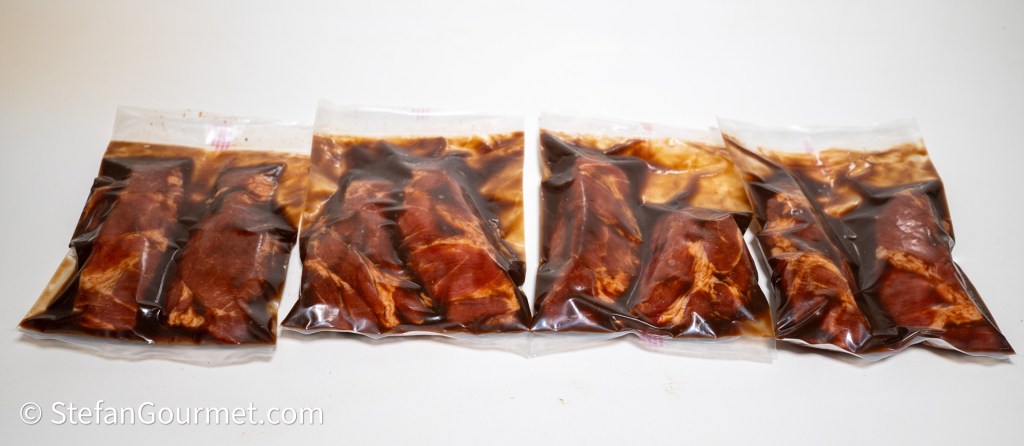
I prefer to prepare the pork sous vide and I am the lucky owner of a chamber vacuum machine, so I’ve vacuum sealed the pork with the marinade. (Without a chamber vacuum machine, you have to use ziploc bags and the water displacement method.)
The advantages of using sous vide are not only more tender and juicy pork, but also more economical use of the marinade, as you can use the same marinade for marinating, basting, and for the sauce to serve with the pork. This is because the sous vide cooking will pasteurize the marinade after it has been in contact with the raw pork.
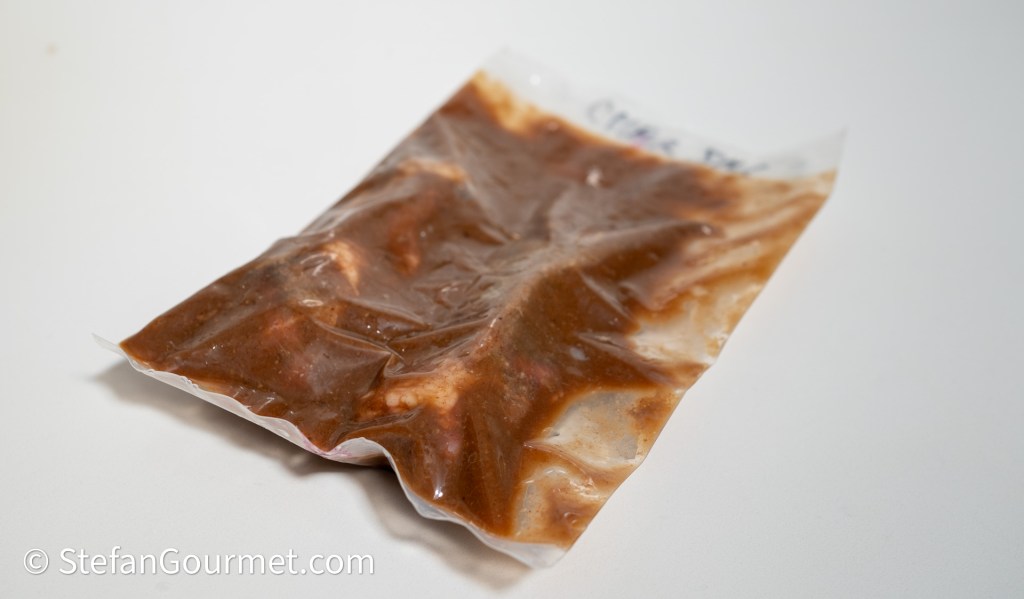
First allow the pork to marinate in the refrigerator overnight, then cook the pork sous vide for 24 hours at 57C/135F. (Because of the marinade, it is not needed to scald the bags in hot water to prevent a bad smell.)
After sous vide cooking, you can chill the bags in cold water (preferably with ice) and store it in the refrigerator for some days or in the freezer for up to a year (allow to thaw in the refrigerator for 24 hours before use).
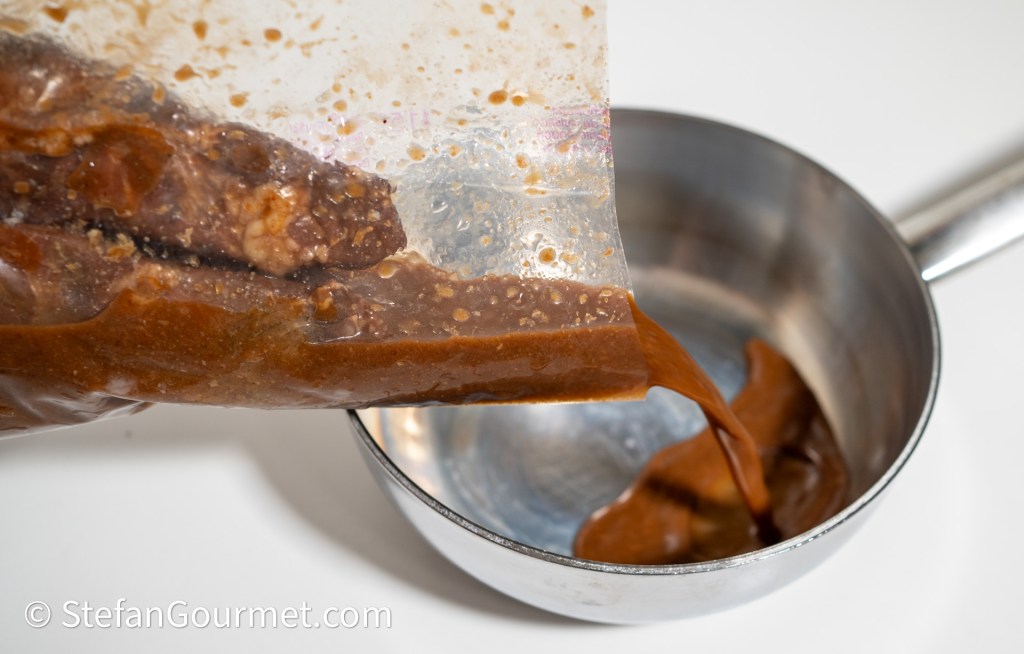
Preheat the broiler or gas grill, or prepare a charcoal grill.
Pour the marinade with pork juices out of the sous vide bag into a saucepan.
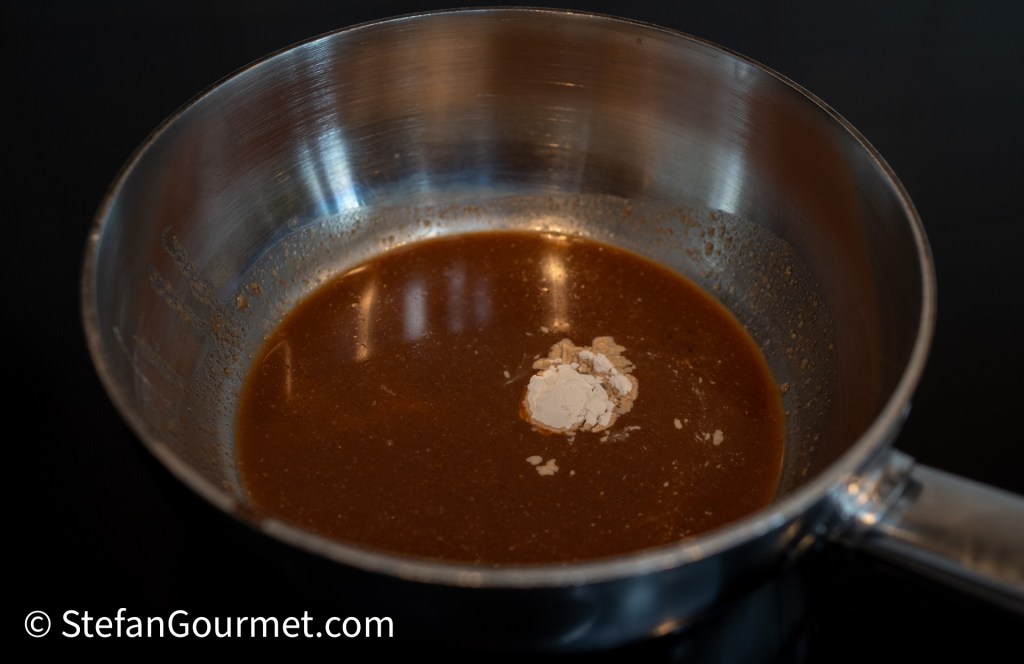
Add cornstarch (especially if the marinade is still warm, it is better to stir the cornstarch with some cold water into a smooth slurry first, to prevent lumps). The amount of cornstarch depends on the amount of marinade.

Stir until the cornstarch has dissolved without lumps.
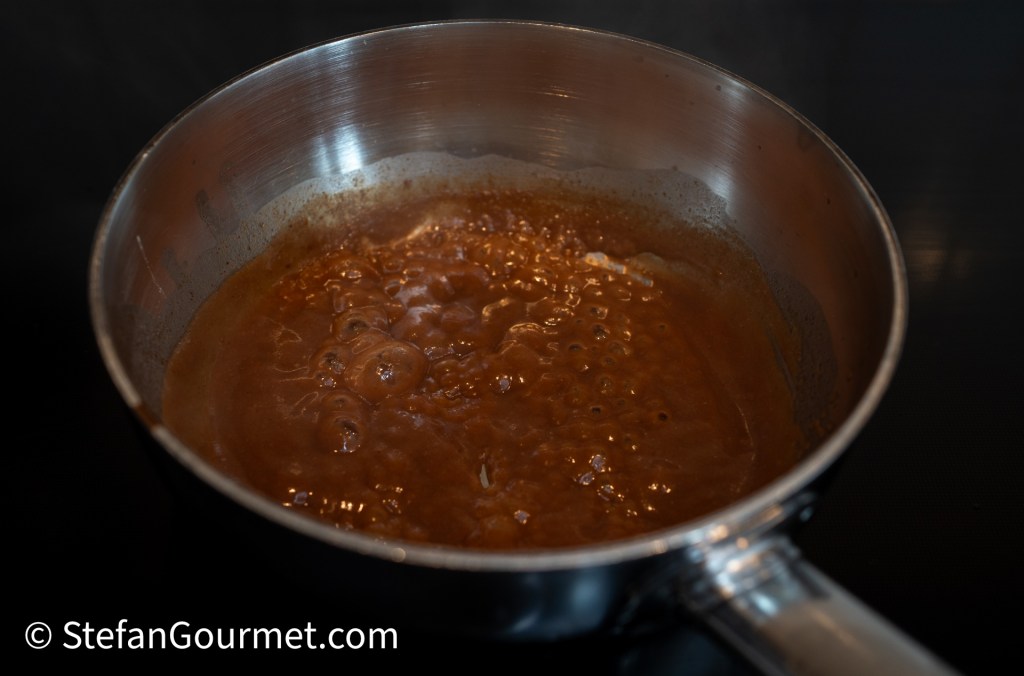
Bring to a boil, stirring, until the sauce has thickened. This sauce will be used both for basting the meat and for serving it with the pork. Add more honey and soy sauce to the sauce to taste. It needed more honey than I had expected to balance out the flavor.
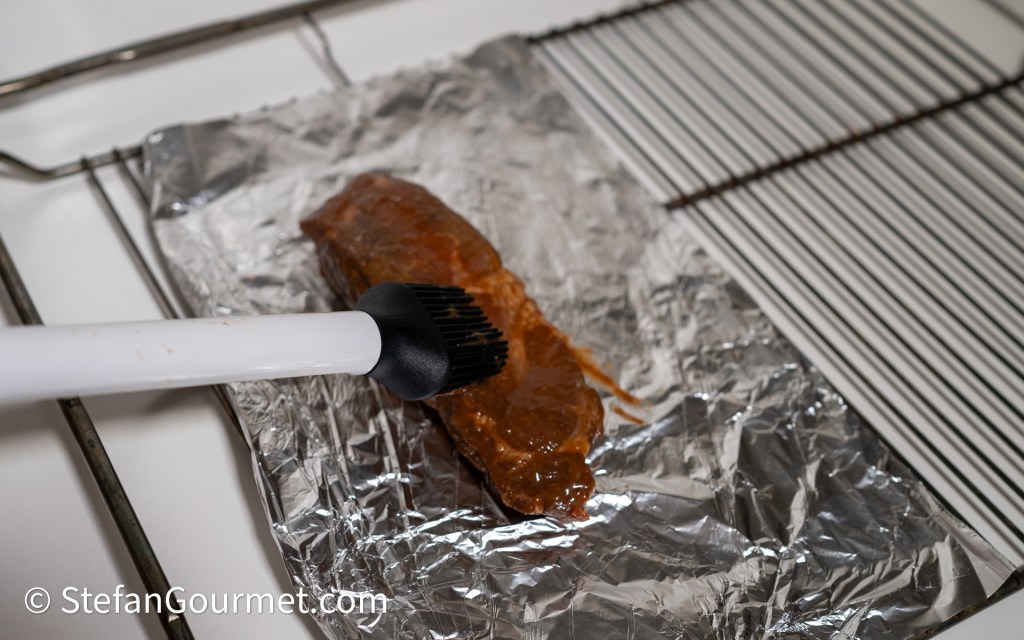
Baste the pork with the sauce, and grill it under the broiler or over direct heat on a gas or charcoal grill, until the outside is slightly charred and the inside is warmed through (remember the pork has already been cooked sous vide). Baste the meat from time to time with the sauce.
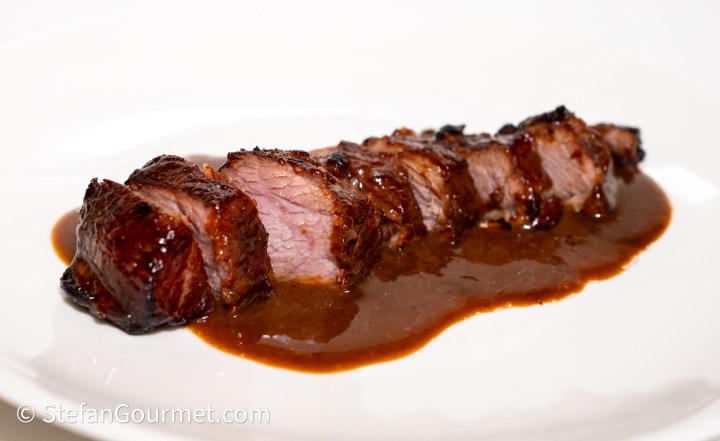
Slice the meat, and serve with the sauce.
The verdict
This is obviously more work than using a jar of store-bought char siu marinade, but it is not a terrible amount of work if you can source the ingredients easily.
The flavor is much more complex than with store-bought marinade. As mentioned in the introduction, I thought the cloves came through too strongly, and so I will use only half the amount next time (already reflected in the recipe above). It would be interesting to try it with the spices that I could not find, but even without them I thought the more complex and interesting flavor was worth the additional effort.
The amount of soy sauce (saltiness) and honey (sweetness) to be added to the sauce has a major impact on the final flavor. This is a matter of personal preference, but also of balance. I had to add much more honey than I had anticipated to get a good balance with the spices. Next time I will make this I will measure the amounts I used and update this recipe, so you will have my version as a reference.


Amazing! And these ingredients – fermented tofu? I had no idea! It’s also fun to make some of these sauces from scratch, but it’s frustrating when you can’t source all of the ingredients. I actually found galangal on Amazon! Anyway – beautiful ribs!
LikeLiked by 1 person
This marinade would be lovely on so many other proteins.
LikeLiked by 1 person
Sounds intriguing. I’ll go raid my favorite Chinese store.
LikeLiked by 1 person
What a coincidence! My family has fallen in love with Char Siu during one of our trips to Singapore, too. Thanks for sharing your delicious recipe. 🙏
LikeLiked by 1 person